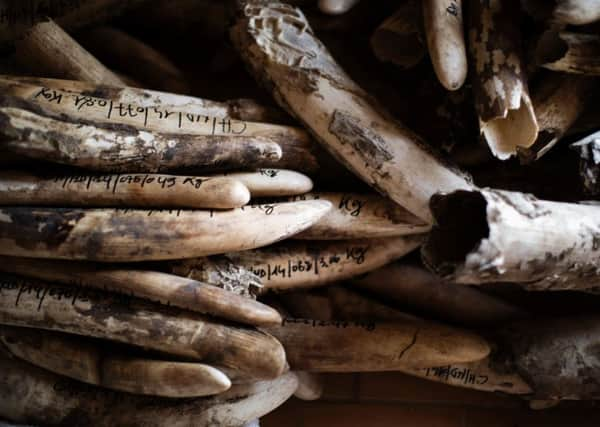Ilona Amos: Global effort needed to tackle illegal wildlife trade


Meanwhile, countless other species are vanishing at an alarmingly rapid rate. The key causes are the usual suspects – climate change, the spread of urbanisation, deforestation, intensification of agriculture. And of course we are to blame for all of the above.
However, the survival of some species is even more directly threatened by humans through an unprecedented explosion in illegal wildlife trade, driven by demand for exotic pets, trophy hunting and animal parts.
Advertisement
Hide AdAdvertisement
Hide AdSome examples of illegal wildlife trade are well known, such as poaching of elephants for ivory, rhinos for their horns and tigers for their skins and bones. However, countless other species are similarly overexploited, from sea turtles to tropical trees.
But not all wildlife trade is against the law. Many plants and animals are taken from the wild and then sold legitimately as food, pets, ornamental plants, leather goods, tourist ornaments and medicine.
Wildlife crime is a big business, with estimates suggesting it is worth around £20 billion a year. A recent jump in online transactions is making the industry increasingly difficult to monitor.
The plight of African elephants has received high-profile backing from celebrity campaigners such as Joanna Lumley and even the royal family. Prince William recently spoke out against poaching, saying: “Ivory is a symbol of destruction, not of luxury and not something that anyone needs to sell or trade. Indeed. I would challenge anyone who knows the truth of how these wildlife products are obtained to justify desiring them.”
The most recent count revealed there are fewer than 400,000 savannah elephants left across 18 Southern African countries -– a population drop of 30 per cent in seven years. The overall rate of decline is eight per cent a year, though it’s higher than that in some countries, and is primarily due to poaching. The drop in numbers has been accelerating since 2007, despite an international ban on sales of ivory since 1989.
This past week global leaders, inter-governmental agencies and conservationists have been locked in discussions over the future of wildlife trade at a major summit in South Africa staged by the Convention on International Trade in Endangered Species of Wild Fauna and Flora (Cites). As the Conference of the Parties nears its close in Johannesburg, there have been winners and losers.
Animal cruelty campaigners have been rejoicing after a proposal by Swaziland to sell existing stocks and horn harvested from the 74 living rhinos in the country to licensed retailers in Asia was defeated. The decision to adopt a resolution recommending the closure of domestic ivory markets around the world has also been welcomed as “a victory for elephants”.
Opinion over the effectiveness of an outright ban and destruction of stockpiled tusks is split, with some experts claiming it drives up black market prices and therefore makes poaching more lucrative. They believe a legal and controlled supply, alongside campaigns to drive down interest in ivory products, would be more effective. Looking at the latest statistics, it’s possible they have a point.
However, I think it shows there is more reason than ever to raise awareness of this barbaric industry and stamp out desire at source.